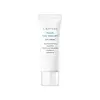What's inside
What's inside
 Key Ingredients
Key Ingredients

 Benefits
Benefits

 Concerns
Concerns

 Ingredients Side-by-side
Ingredients Side-by-side

Water
Skin ConditioningGlycerin
HumectantPropylene Glycol
HumectantHydrogenated Polydecene
EmollientCetyl Ethylhexanoate
EmollientCetearyl Olivate
Phenoxyethanol
PreservativeSorbitan Olivate
EmulsifyingHydroxyethyl Acrylate/Sodium Acryloyldimethyl Taurate Copolymer
Emulsion StabilisingDimethicone
EmollientAllantoin
Skin ConditioningEthylhexylglycerin
Skin ConditioningSorbitan Isostearate
EmulsifyingPolysorbate 60
EmulsifyingDisodium EDTA
Caffeine
Skin ConditioningAscorbic Acid
AntioxidantButylene Glycol
Humectant1,2-Hexanediol
Skin ConditioningSodium Hyaluronate
HumectantParfum
MaskingWater, Glycerin, Propylene Glycol, Hydrogenated Polydecene, Cetyl Ethylhexanoate, Cetearyl Olivate, Phenoxyethanol, Sorbitan Olivate, Hydroxyethyl Acrylate/Sodium Acryloyldimethyl Taurate Copolymer, Dimethicone, Allantoin, Ethylhexylglycerin, Sorbitan Isostearate, Polysorbate 60, Disodium EDTA, Caffeine, Ascorbic Acid, Butylene Glycol, 1,2-Hexanediol, Sodium Hyaluronate, Parfum
Water
Skin ConditioningDicaprylyl Ether
EmollientPropanediol
SolventGlycerin
HumectantCocos Nucifera Oil
MaskingPolyglyceryl-2 Dipolyhydroxystearate
Skin ConditioningPolyglyceryl-3 Diisostearate
EmulsifyingHydrogenated Ethylhexyl Olivate
EmollientMagnesium Sulfate
Oryza Sativa Bran Wax
Skin ConditioningMagnesium Stearate
Cosmetic ColorantPentylene Glycol
Skin ConditioningPanthenol
Skin ConditioningAllantoin
Skin ConditioningSqualane
EmollientOryza Sativa Bran Oil
EmollientBisabolol
MaskingAdenosine
Skin ConditioningLactobacillus/Soymilk Ferment Filtrate
Skin ConditioningOlea Europaea Fruit Oil
MaskingLavandula Angustifolia Oil
MaskingAnthemis Nobilis Flower Oil
MaskingPolyglyceryl-6 Polyricinoleate
EmulsifyingHydrogenated Olive Oil
Skin ConditioningButyrospermum Parkii Butter
Skin ConditioningHydrogenated Castor Oil
EmollientAluminum Distearate
Emulsion StabilisingSorbitan Caprylate
EmulsifyingOlea Europaea Oil Unsaponifiables
Skin ConditioningTocopherol
AntioxidantPolyglyceryl-5 Polyricinoleate
EmulsifyingMethylpropanediol
SolventEthylhexylglycerin
Skin ConditioningWater, Dicaprylyl Ether, Propanediol, Glycerin, Cocos Nucifera Oil, Polyglyceryl-2 Dipolyhydroxystearate, Polyglyceryl-3 Diisostearate, Hydrogenated Ethylhexyl Olivate, Magnesium Sulfate, Oryza Sativa Bran Wax, Magnesium Stearate, Pentylene Glycol, Panthenol, Allantoin, Squalane, Oryza Sativa Bran Oil, Bisabolol, Adenosine, Lactobacillus/Soymilk Ferment Filtrate, Olea Europaea Fruit Oil, Lavandula Angustifolia Oil, Anthemis Nobilis Flower Oil, Polyglyceryl-6 Polyricinoleate, Hydrogenated Olive Oil, Butyrospermum Parkii Butter, Hydrogenated Castor Oil, Aluminum Distearate, Sorbitan Caprylate, Olea Europaea Oil Unsaponifiables, Tocopherol, Polyglyceryl-5 Polyricinoleate, Methylpropanediol, Ethylhexylglycerin
 Reviews
Reviews

Alternatives
Ingredients Explained
These ingredients are found in both products.
Ingredients higher up in an ingredient list are typically present in a larger amount.
Allantoin is a soothing ingredient known for its protective and moisturizingg properties. Because of this, it is often added to products with strong active ingredients.
Studies show higher concentrations of this ingredient can promote wound healing.
Though it can be derived from the comfrey plant, allantoin is produced synthetically for cosmetic products to ensure purity.
Learn more about AllantoinEthylhexylglycerin (we can't pronounce this either) is commonly used as a preservative and skin softener. It is derived from glyceryl.
You might see Ethylhexylglycerin often paired with other preservatives such as phenoxyethanol. Ethylhexylglycerin has been found to increase the effectiveness of these other preservatives.
Glycerin is already naturally found in your skin. It helps moisturize and protect your skin.
A study from 2016 found glycerin to be more effective as a humectant than AHAs and hyaluronic acid.
As a humectant, it helps the skin stay hydrated by pulling moisture to your skin. The low molecular weight of glycerin allows it to pull moisture into the deeper layers of your skin.
Hydrated skin improves your skin barrier; Your skin barrier helps protect against irritants and bacteria.
Glycerin has also been found to have antimicrobial and antiviral properties. Due to these properties, glycerin is often used in wound and burn treatments.
In cosmetics, glycerin is usually derived from plants such as soybean or palm. However, it can also be sourced from animals, such as tallow or animal fat.
This ingredient is organic, colorless, odorless, and non-toxic.
Glycerin is the name for this ingredient in American English. British English uses Glycerol/Glycerine.
Learn more about GlycerinWater. It's the most common cosmetic ingredient of all. You'll usually see it at the top of ingredient lists, meaning that it makes up the largest part of the product.
So why is it so popular? Water most often acts as a solvent - this means that it helps dissolve other ingredients into the formulation.
You'll also recognize water as that liquid we all need to stay alive. If you see this, drink a glass of water. Stay hydrated!
Learn more about Water